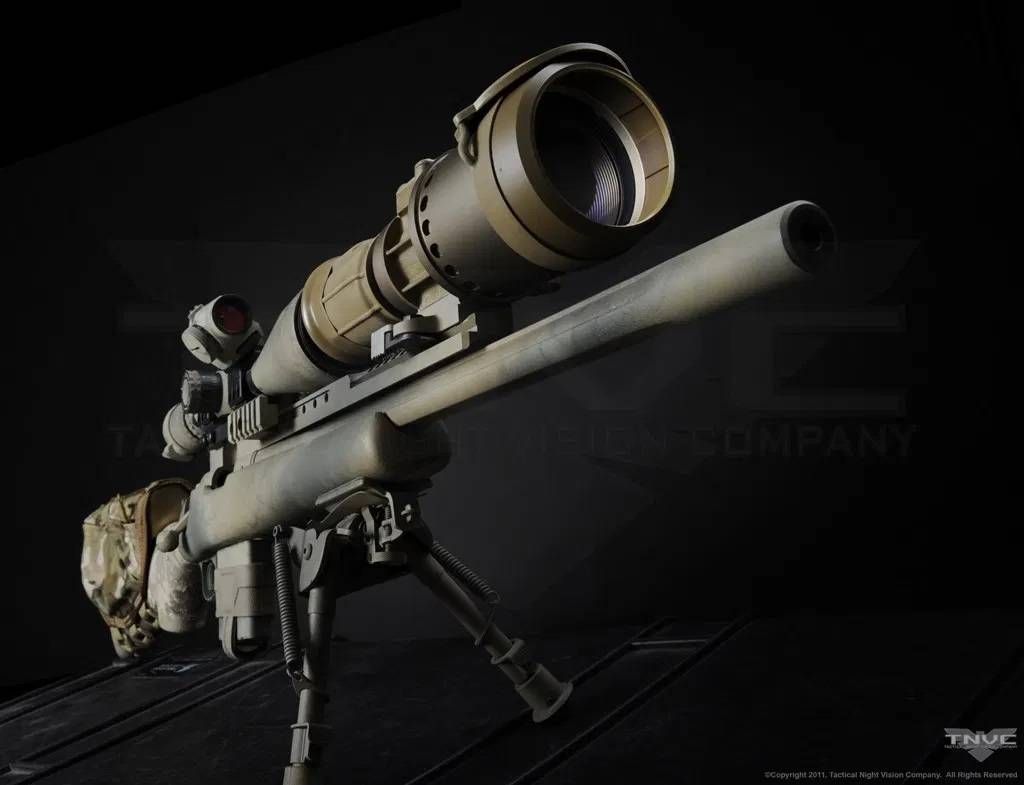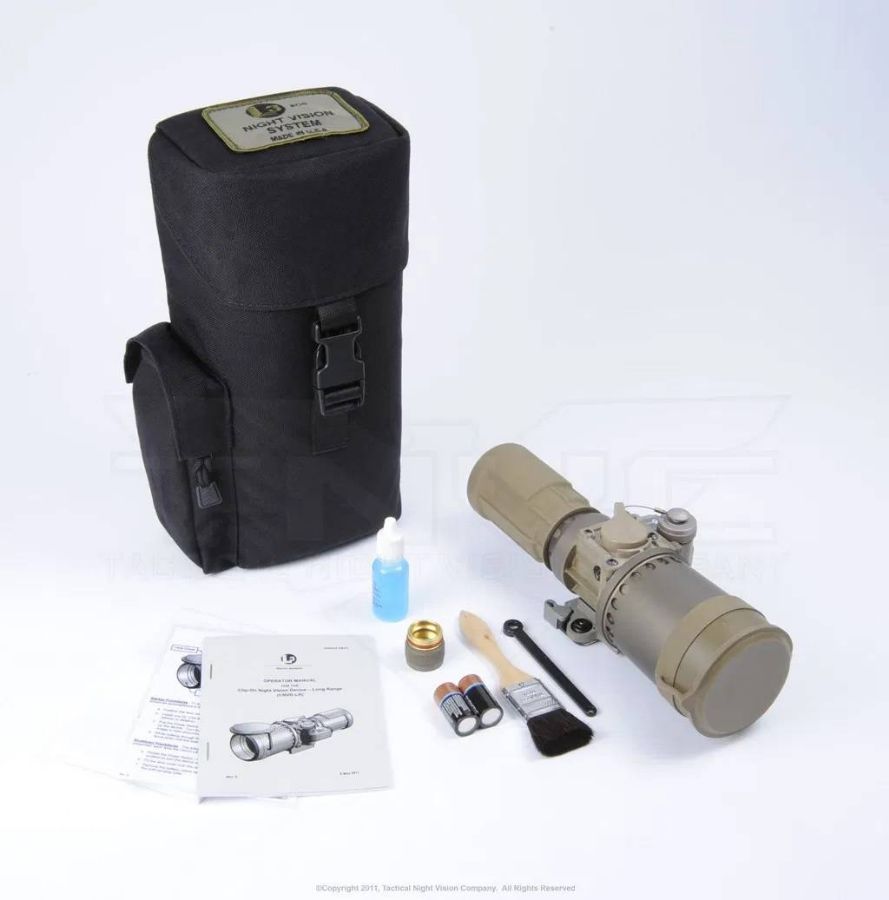
Based on the standard-issue AN/PVS-24 (M2124), the L3Harris CNVD-LR (Clip-On Night Vision Device – Long Range) converts an existing magnified day scope into a long range-capable night vision optic. The CNVD-LR attaches to M1913 Picatinny Rail in front of standard day scopes. Using a fast catadioptric lens, it gathers more light than its little brother, allowing it to provide crisp night vision images out to extended distances. The CNVD-LR can be easily attached and removed so the operator only needs to carry one weapon system for both day and night engagements. Clip-on sights offer other benefits such as allowing shooters to maintain established eye relief on their day scope and the ability to use it in front of a spotting scope as well.
The CNVD-LR uses an L3Harris Gen3 Unfilmed White Phosphor image intensifier tube with a minimum Figure of Merit (FOM – Signal to Noise Ratio x lp/mm Resolution) of 2376, one of the highest guaranteed minimum performance specifications currently available on the market. Coupled with its 68mm objective lens, it produces superior images at extended ranges. The CNVD-LR is categorized as a “long range clip-on,” putting it in the same category as the AN/PVS-27 and AN/PVS-26. Coupled with a high quality day scope, it can identify a moving human out to 1,800 meters. The L3Harris body housing has some very user-friendly interfacing. Focus is adjustment is accomplished with a top-mounted lever that is extremely easy to find and use in the dark. This design allows for incredibly fine adjustments. A standard rear-facing pull-knob provides on/off and gain adjustment. Basically, the controls are laid out for ease of use when the CNVD-LR is mounted forward of the day scope and requires little movement on the part of the shooter to reach.
The CNVD-LR is optimized for 8X-12X magnified optics. But, on a clear night, we were able to get the magnification up to 14X using a Nightforce NXS 3.5-15×50 scope. While the identification range of a moving human is about 1,800 meters, we found the recognition range (is the human friend or foe?) to be about 450 meters, give or take. Like other long range clip-on sights, recognition is accomplished through overall feature recognition (such as recognizing helmets, equipment, etc.). Facial recognition can be done at about 120-130 meters. Obviously, these distances are depending on the ambient lighting conditions and the quality of the glass in the day scope coupled with the CNVD-LR.
The CNVD-LR features a lightweight hybrid body housing comprised of high-impact polymer and aerospace-grade aluminum. It is lighter and smaller than other clip-on sights in its class. It is specifically designed to withstand repeated recoil of Medium-caliber weapon systems up to 7.62 NATO. The unit is powered by a single 3V CR123 battery, but comes with a conversion that allows it to be run on a single AA battery.
Get your HIGH FOM L3Harris CVND-LR here! https://tnvc.com/shop/cnvd-lr/

